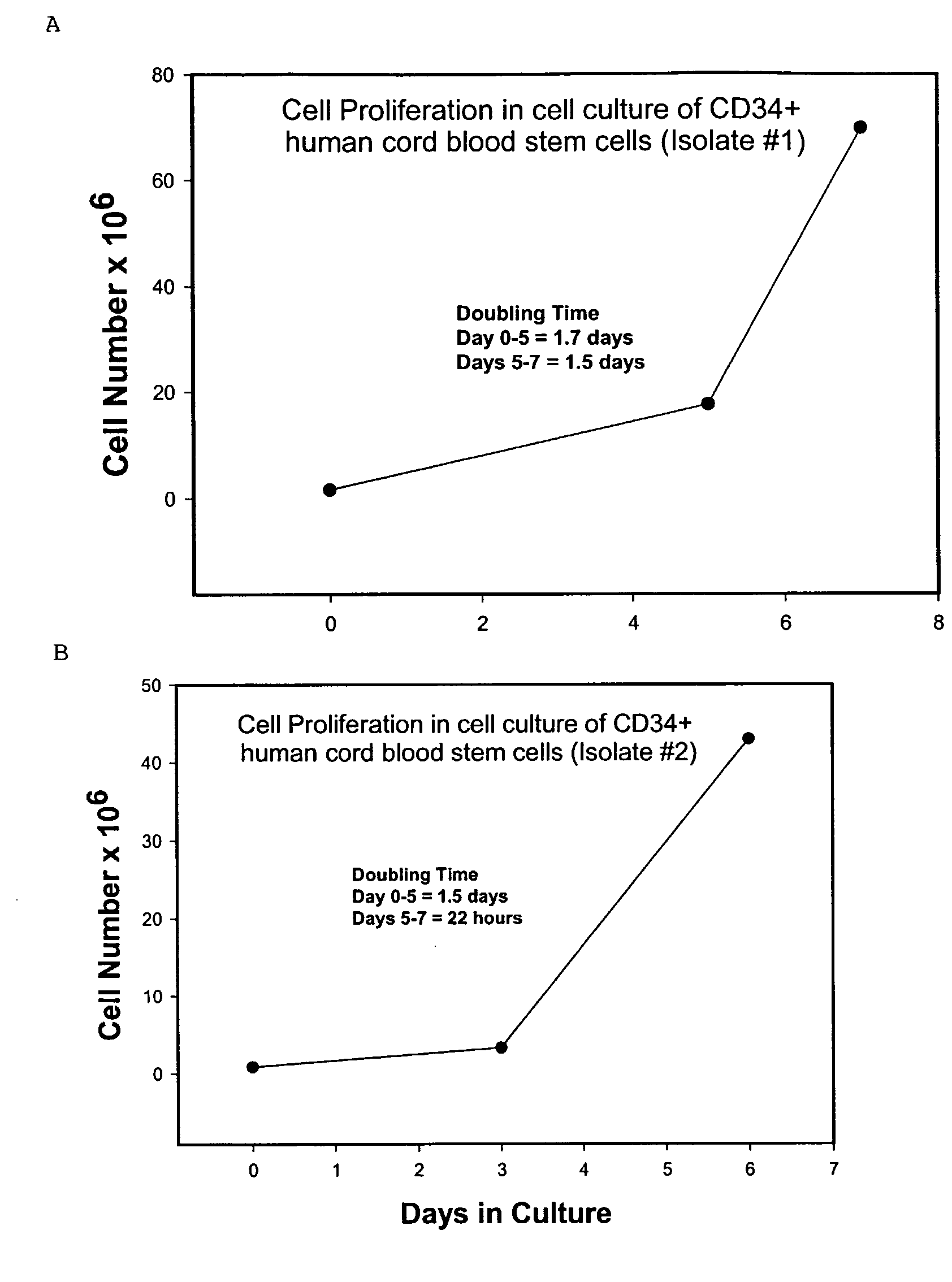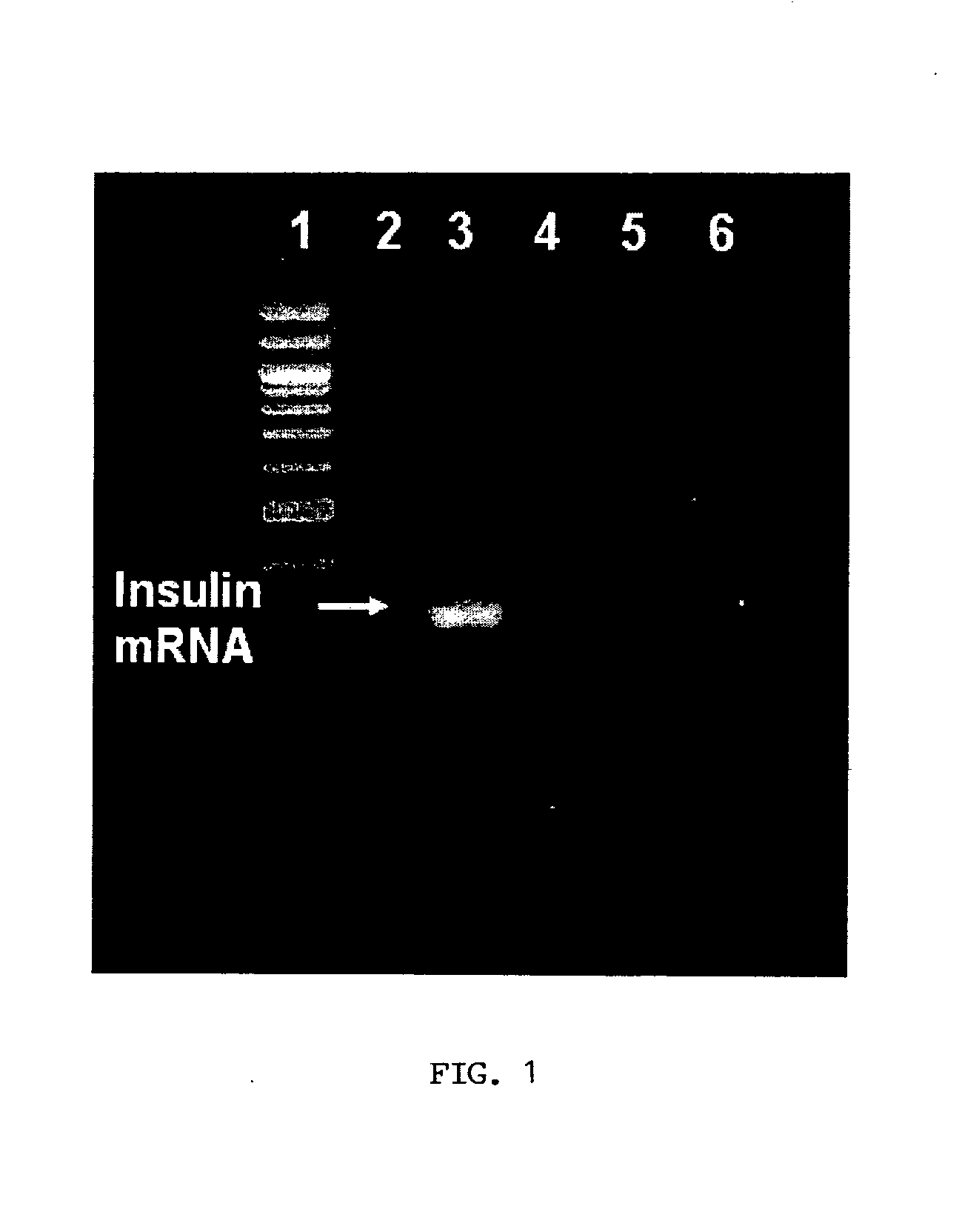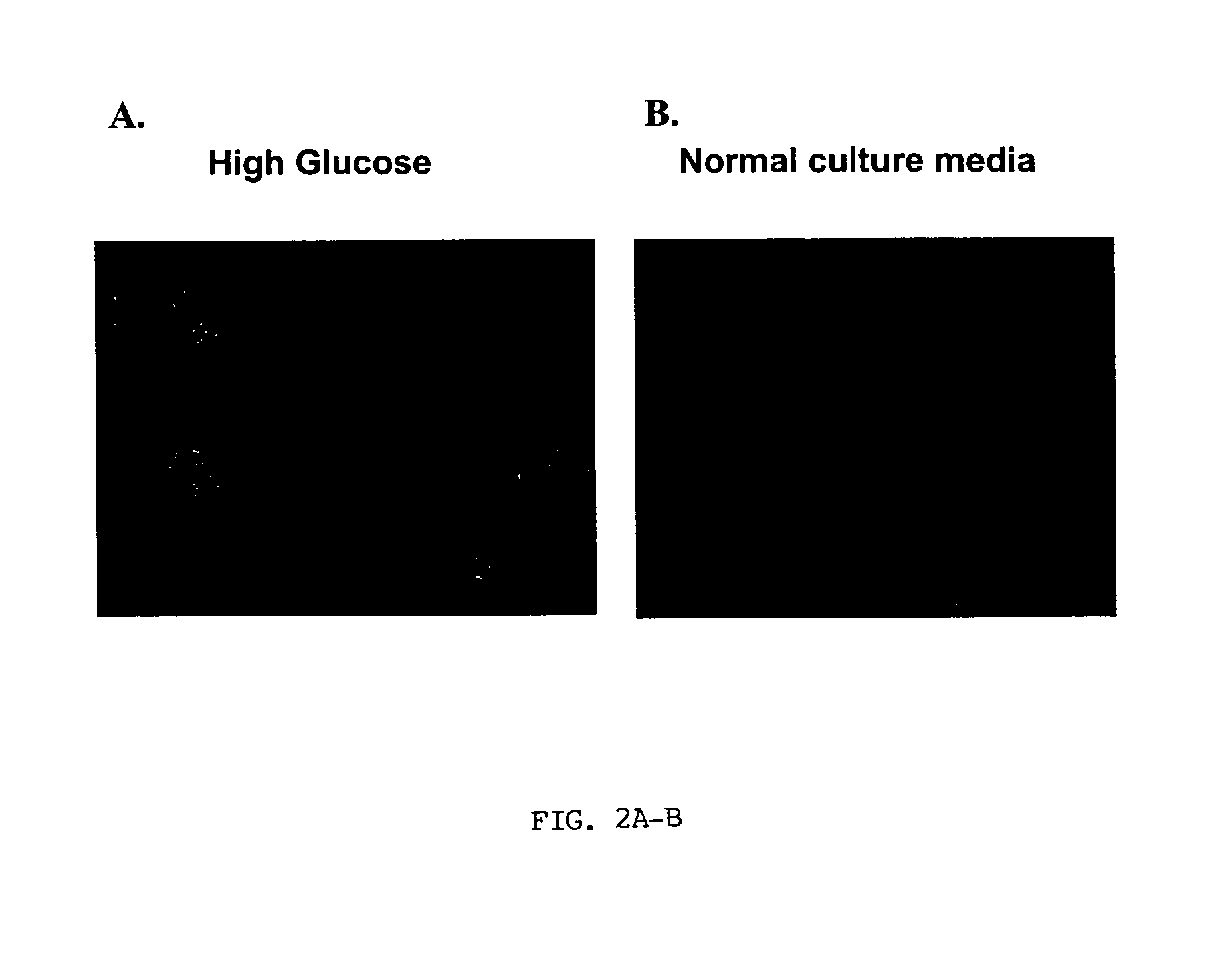Methods and Compositions For Preparing Pancreatic Insulin Secreting Cells
- Summary
- Abstract
- Description
- Claims
- Application Information
AI Technical Summary
Benefits of technology
Problems solved by technology
Method used
Image
Examples
example 1
Isolation and Culture of Stem Cells From Human Cord Blood
[0056]Isolation of stem cells from human cord blood. Human cord blood was obtained from the Ob / Gyn department at the University of Texas Medical Branch at Galveston. The cord blood was collected in either a sterile heparinized bag or in a tube containing ACD- at the AABB recommend a ratio of 1:7 (1 part ACD-A solution to 7 parts whole blood). The cord blood was used within 4-6 hours of collection.
[0057]Enrichment of cord blood progenitor cells. To concentrate leukocytes, 2 ml of HetaSep was added per 10 ml blood at room temperature in a 50 ml centrifuge tube, mixed well, and centrifuged for five minutes at 50×g. The supernatant plus approximately the top 10% of pellet volume was removed and retained. The remainder of the pellet was discarded. The 50 ml centrifuge tube was then filled with wash medium, PBS+0.5% BSA (without Ca2+ and Mg2+), the pellet resuspended, and then centrifuged at 300×g for 10 minutes. The supernatant was...
example 2
Insulin Synthesis in Glucose-Induced Stem Cells
[0065]Human cord blood stem cells isolated from fresh cord blood based on expression of CD34 using immunomagnetic beads were induced to express insulin by exposure to high glucose concentrations. The cells were expanded in low glucose media and then put into media containing high glucose as described in Example 1. After 10 days in the high glucose media, insulin synthesis was verified by immunohistochemical and RT-PCR analysis. The immunohistochemical and RT-PCR analyses verified insulin synthesis in cells exposed to high glucose, whereas control stem cells did not express insulin.
[0066]Immunohistochemistry. Cells were washed twice with PBS before being resuspended at 200,000 cells / 100 μl PBS. Cells were cytospun for 5 minutes at 500 RPMs. Slides were stored at −20° C. until ready to fix and stain.
[0067]Slides were fixed with 4% paraformaldehyde (500 μl) at room temperature for 20 minutes, and then washed twice with PBS. Slides were the...
PUM
| Property | Measurement | Unit |
|---|---|---|
| Time | aaaaa | aaaaa |
| Molar density | aaaaa | aaaaa |
| Molar density | aaaaa | aaaaa |
Abstract
Description
Claims
Application Information
 Login to View More
Login to View More - R&D
- Intellectual Property
- Life Sciences
- Materials
- Tech Scout
- Unparalleled Data Quality
- Higher Quality Content
- 60% Fewer Hallucinations
Browse by: Latest US Patents, China's latest patents, Technical Efficacy Thesaurus, Application Domain, Technology Topic, Popular Technical Reports.
© 2025 PatSnap. All rights reserved.Legal|Privacy policy|Modern Slavery Act Transparency Statement|Sitemap|About US| Contact US: help@patsnap.com



